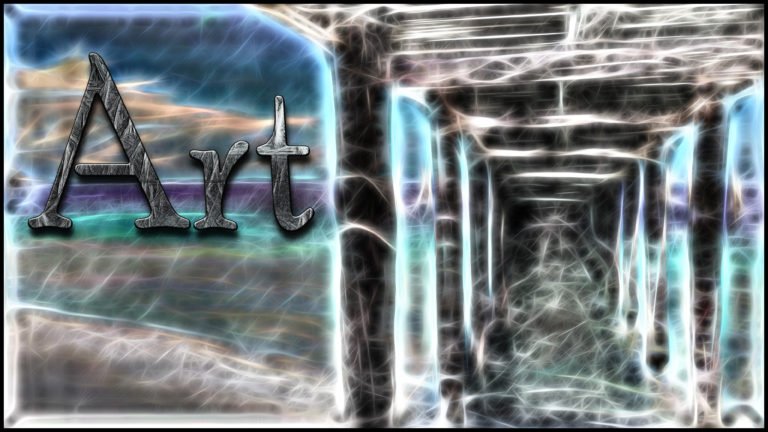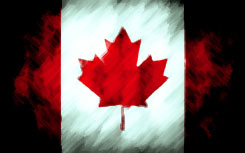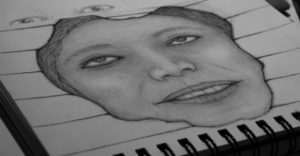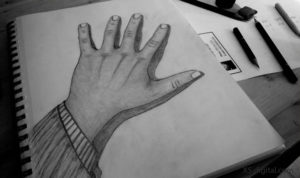Art plays a vibrant role in the personal life of the individual as well as in the social and economic development of the nation. The study of Visual arts encourages personal development and the awareness of both our cultural heritage and the role of art in the society. The learner acquires personal knowledge, skills and competencies through activities in Visual arts. When one studies Visual arts, he/she would come to appreciate or understand that art is an integral part of everyday life.
The role art plays in personal development and in the socioeconomic development of the nation have been explained below.
1. It fosters creativity:
Visual art education helps the learner to develop the ability to think, feel and act creatively with visual materials. The student also develops the ability to bring something new into existence. This desirable quality is acquired when the learner engages in practical lessons such as the designing and creation of an artefact in solving a problem or satisfying a need.
2. It offers a total education to the individual:
Visual art education offers holistic education to learners. Such education comes about when the learner produces an artefact in satisfying a particular need in the society. He engages in the organization and exploration of art materials, tools and techniques. Moreover, he gathers varieties of ideas, selects the key ideas, simplifies and analyse them, combine and separate ideas. These problem-solving activities help in educating the head (mental faculties) of the learner.
Also, when the artist uses the tools and materials he had explored and the techniques acquired in producing the artefact he develops manual or practical skills. This caters for the education of the hand.
Visual art education helps learners to appreciate works of art. When we see these artistic creations, they arouse certain feelings in us. Appreciation for the work would move us to talk intelligently and knowledgeably about it. This educates the heart. Owing to this, we can say that the study of Visual arts provides creative education of the head, hand and heart.
3. It helps in learning about our cultural heritage:
Visual art education helps the learner to build an appreciation for our cultural heritage handed down to us by our forefathers. This appreciation is acquired through the learning of the various histories of art and the study of art appreciation and criticism. These studies help the artist to understand the meanings and usefulness of our arts which embody our set of beliefs and ideologies. Thus, works of art are used in maintaining the ideas, knowledge and beliefs of a society as handed down from one generation to another. In this way, we learn about our cultural heritage.
4. Provides knowledge about aesthetics:
The study of Visual arts helps learners to develop keen ideas about beauty (aesthetics). Since the learner is taken through a lot of appreciation and criticism of various artistic creations, he/she develops ‘good taste’. He is able to distinguish between artworks that are aesthetically pleasing and those that are not. This helps the learner to take decisions and make good judgements.
5. Projects personal and national identity:
Visual art education helps learners to build self-respect and personal ego. When an artist produces works of art in and outside the society or country, it projects his identity or makes him known to his own countrymen and foreigners. This largely comes about when the artist exhibits his artistic creations during art exhibitions, fairs and bazaars. When an exhibition is organised outside the country and the artist partakes in it, it assists greatly in projecting his/her nation.
Also, since the themes or subjects of works from Ghana lavishly talk about our culture, it helps in making our culture known to other people of the world.
6. Helps develop subjective thinking for a cordial human relationship:
Skills needed in building a healthy family and human relationships are reflected in art activities. Through the organisation of various opposing elements of design such as lines, shapes, texture, tone, pattern and colour into pleasant relationships, the artist is able to develop a peaceful and cordial relationship with people of various characters and cultural identities.
The study of art appreciation which teaches learners to develop the ability to see ‘good’ in every artistic creation also builds in learners the ability to accept people as they are. This subjective thinking helps in the development of cordial human relationships.
7. Promotes cognitive, psychomotor and affective modes of development:
Visual art education promotes the cognitive mode of development in learners. Skills in thinking and reasoning are developed by the organisation of materials into art forms and critically appreciating them. This critical thinking helps in the cognitive development of learners.
Practical activities in Visual art help to exercise the muscles and keep the body healthy. This promotes the psychomotor development of learners.
The affective or emotional development of learners is nurtured through the appreciation of works of art. Practical lessons in art help the learner in cultivating desirable qualities like patience, long- suffering and tolerance, which helps the heart to be always healthy.
8. Art is used in correcting physical, psychological and emotional growth deficiencies:
Practical activities in visual art can help reduce tension and emotional stress in people. The lives of physically challenged persons and social misfits are reorganised or changed when they engage in practical lessons in art. Those who have deficiencies in their physical and psychological growths are corrected gradually when they explore with art tools and materials in the creation of artworks. Art, therefore, serves as a therapy or medical aid for those with growth deficiencies.
9. Provides avenues for the development of cottage and small-scale industries:
The Visual arts programme provides a creative base for the setting up of small-scale industries. Students are taught how to produce quality products that would meet the taste and demands of the market. In addition, learners are instructed in entrepreneurial skills and on factors to consider in the setting up of their own enterprises in the field of art. This training assists the learners in setting up their own small scale industries.
10. Promotes the tourism industry of the nation:
Works of art are sold to tourists to earn foreign exchange. Art souvenirs are exported to foreign lands to earn substantial funds for the artist and the nation as a whole. This helps in the promotion of the tourism industry.
11. Art reduces poverty:
Art is an income generating venture that provides employment for several Ghanaians. It helps its practitioners in earning money to fend for themselves and their families reducing the poverty ratio of the nation.













